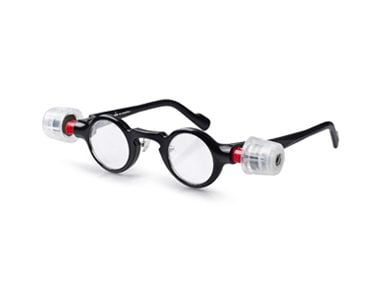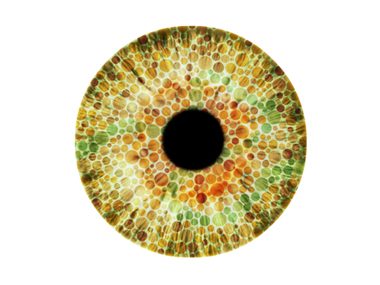
Lenses That Always Adjust
Change your prescription just by twirling a couple
of knobs on the sides of your Adlens glasses. The lenses are filled with a bit of clear liquid trapped
between two flexible membranes, which
respond to the knob by changing shape and thus the power of the lens. Switch each eye’s lens
between nearsighted and farsighted use, tweak it for different activities,
or share the glasses with others. Or snap off the knobs to lock the prescription in place. Available now, Adlens glasses range from $70 to $150. For every pair you buy, the company
donates one to Rwanda, where only 14 eye doctors serve 10 million people.
Source: Adlens, Inc., Oxford,
United Kingdom, adlens.com

App for “Trying on” Frames at Home
It’s hard to buy glasses
online since you can’t try on frames. Glasses.com offers a free iPad app
that creates a 3-D model
of your head (the app prompts you through steps to generate the
image), so you can then “try on” the site’s thousands of frames at home. You can rotate your head to check out different
angles, tap the screen to slide frames up and down your nose, and share pics with social networks to
get feedback from friends. When you’ve narrowed it down, you can order four pairs at a time, wear them for a week, and return the ones you don’t want, all with free shipping.
Source: glasses.com, a division of
1-800 CONTACTS, Inc., Draper, Utah

Glasses That Reverse Color Blindness
About one in ten men worldwide has trouble
distinguishing red and green colors, but special purple-tinted glasses might help them stop and see the roses. Designed to help medical professionals spot veins under the skin, the Oxy-Iso glasses had a
startling side effect: Many
color-blind users were able to spot vibrant reds and greens for the first time. They won’t work for everyone, and users are urged not to drive with them
because the lens boosts the ability to see red-green colors at the expense of yellow-blue ones. They’re available at amazon.com for about $300.
Source: Mark Changizi, PhD, director of human cognition, 2AI Labs, Boise, Idaho, o2amp.com